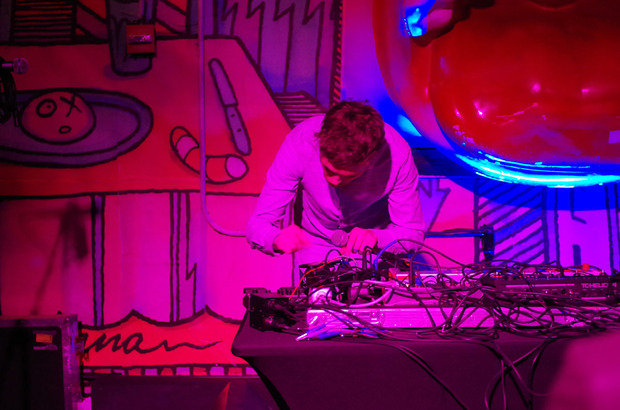Interview: Sin Fang
The Icelandic musician discusses taking his sound from album to performance


We’ve come to expect nothing short of wonderment from the Icelandic music that reaches global airwaves—expressive and exploratory, but with recognizable pop tinges. Sin Fang delivers all of the above and his 2013 album Flowers was one of the year’s best. It’s a beautiful collection of tracks, occasionally soaring in an ethereal soundscape, sometimes jangling around with rock sensibilities, but always grounded with thoughtful lyricism. It’s catchy and sweet, but powerful. There’s an optimism present that illuminates folk undertones and electronic flourishes—as the genre is frequently referred to as “folktronica.” It’s the third album from Sindri Már Sigfússon, the band’s sole member, and his most polished to date.
With “Flowers,” Sigfússon partnered with producer Alex Somers, who has worked on albums from Sigur Rós and their frontman Jónsi, and recorded it in Jónsi’s home studio. These influences are present in the music with occasional whimsy; grace notes from more obscure instruments and vibrant orchestration. When listening to the studio recordings, the album begs the question: how will this translate to live performance? We had an opportunity to see Sin Fang perform at NYC’s The Standard East Village with only a series of electronic devices as his backing band, and to speak with him about his work and the transition from album to live audience.


How do you feel your music fits into the Icelandic music community?
In Iceland, you do not really have to be playing a certain style. You need to be doing something nice or something cool and making what you want to make. I’ve toured with many bands, and I’ve been a part of many bands. I’ve been all over the place but I am still a part of the community.
You are also in the band Seabear, but this is your third album as Sin Fang. Why this project and this album?
It just happened this way. I made an album while I was still doing Seabear. I just wanted to try something solo—to do it all by myself. I wanted to do a project where I was in control of everything. I did it under the name Sin Fang Bous for the first album. People started referring to the project as Sin Fang, I guess they didn’t like three syllables, so I started referring to it as Sin Fang as well. But, it was just something different. Sin Fang was a reaction to being in a band. I had grown bored of acoustic folk music. I wanted variation.
How long did you spend in the studio making this album?
I was in my studio for a few months. I remember when I started working on the album I had 27 songs and gave them to Alex [Somers]. We picked 10 or 11 together and spent at least three months in session together assembling the album.

Do you ever play with session musicians or do you prefer to perform alone?
I have this version of this band, where it is just me. At others shows, I’ve recently been playing with two drummers for the impact of multi-percussion. I’ve also had five people playing with me where the music itself, it’s not electronic. It’s a more rocky, folky kind of performance. For the last album I did I was traveling with a 12-piece live band. I like the freedom of performing alone. It’s allowed me to perform versions of songs I am doing for a new EP releasing this summer. I can also play remixes of my songs, outside the style they were initially made.
How do you define a difference between your live tracks and recorded work?
I’m really into being in the studio and working for a long time to get the exact sounds that I like. You can never recreate that in a live setting. It’s a separate thing, a separate experience. When you are making an album, it is permanent and you must be happy with all of the results. When you are performing live, it is a moment and you must make people happy within that moment. I go kind of crazy in the studio. No matter how hard you try, and I’ve tried, it’s never going to be the same live.
Photos by David Graver











